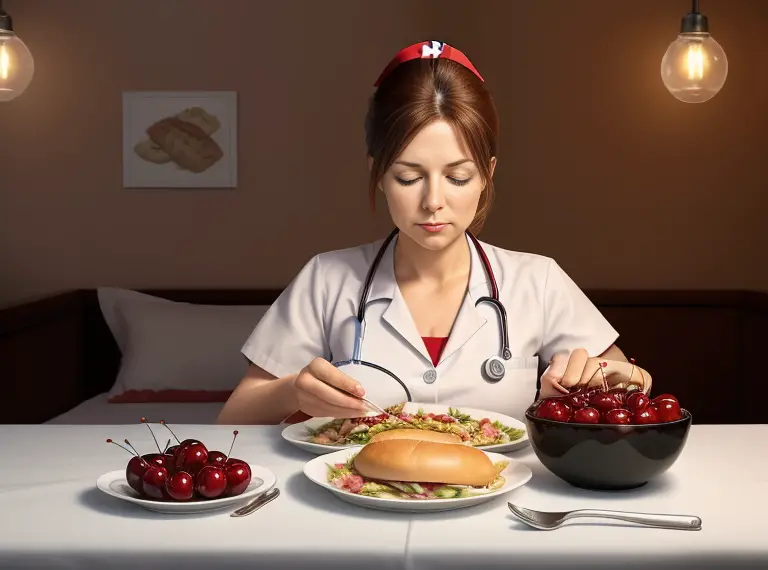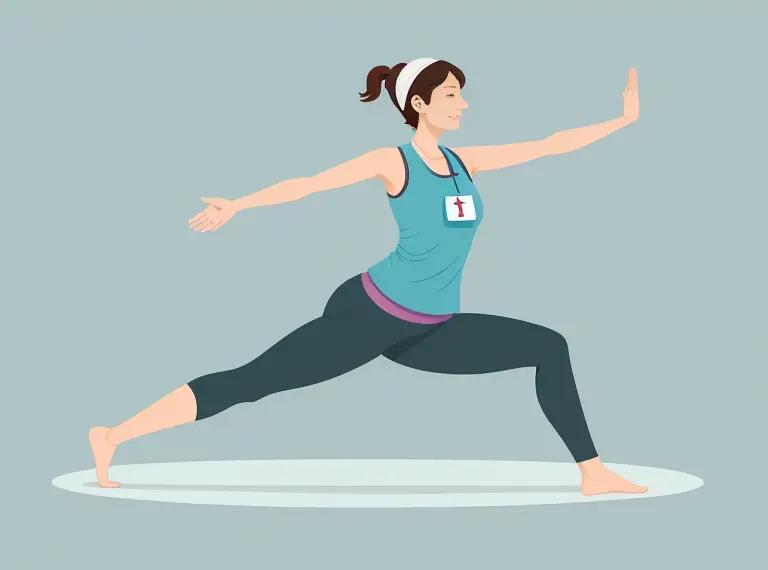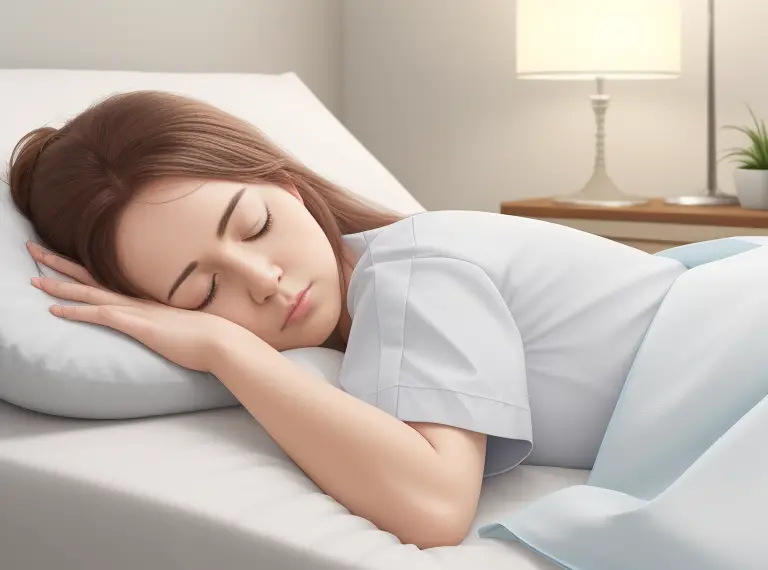Hey there, fellow nurses! Do you often find yourself feeling exhausted and drained after a long shift at the hospital? Well, you’re not alone. The demands of the nursing profession can be physically and mentally taxing, leaving you longing for a little rest and rejuvenation. But what if I told you that there’s a secret weapon that can help you recharge and boost your performance? It’s called a power nap, and in this article, we’ll explore its incredible benefits specifically tailored for nurses like yourself.
Definition of Power Naps
Before we dive into the advantages, let’s clarify what we mean by a power nap. Essentially, a power nap is a short period of sleep, typically lasting between 10 to 30 minutes, taken during the day to enhance alertness and recharge your energy levels. Unlike longer naps or full-blown sleep sessions, power naps are designed to be brief and strategic, providing you with the maximum benefits without interfering with your regular sleep schedule.
Importance of Rest for Nurses
As nurses, you dedicate your time and energy to caring for others, often putting your own well-being on the back burner. However, it’s crucial to recognize that prioritizing your rest and self-care is not only beneficial for you but also for your patients. Adequate rest allows you to function at your best, providing top-quality care and maintaining a high level of professionalism.
Now that we’ve set the stage, let’s delve into the science behind power naps and understand why they can be a game-changer for nurses like yourself.
The Science Behind Power Naps
Now that we understand the importance of rest for nurses, let’s explore the fascinating science behind power naps. It turns out that our sleep cycles and the way our bodies function play a significant role in the effectiveness of these short bursts of shut-eye.
Understanding Sleep Cycles
Our sleep consists of various cycles, each with distinct stages. One such cycle is known as the circadian rhythm, which is responsible for regulating our sleep-wake patterns throughout the day. It’s during these cycles that our bodies undergo essential processes to restore and rejuvenate.
The circadian rhythm is composed of two phases: the ultradian rhythm and the homeostatic drive. The ultradian rhythm refers to the recurring patterns of brain activity and physiological changes that occur within shorter time frames, usually lasting 90-120 minutes. Within these cycles, we experience alternating periods of deep sleep and rapid eye movement (REM) sleep, where dreams occur.
The homeostatic drive, on the other hand, represents our body’s internal drive for sleep, which builds up over time as we stay awake. It is this drive that eventually leads us to feel tired and in need of rest.
Benefits of Short Naps
Short power naps have been shown to leverage these sleep cycles and provide numerous benefits for nurses. Let’s take a closer look at some of these advantages:
1. Enhancing Alertness and Productivity
As nurses, being alert and maintaining a high level of productivity are essential for providing top-notch patient care. This is where power naps come to the rescue, offering a remarkable boost to your alertness and overall work performance.
Recharging Cognitive Abilities
Have you ever found yourself struggling to concentrate during a long and demanding shift? The mental demands of nursing can be exhausting, but a well-timed power nap can do wonders for your cognitive abilities.
Power naps allow your brain to rest and recharge, giving it the opportunity to process information and consolidate memories. This can lead to improved concentration, enhanced memory retention, and sharper mental acuity. So the next time you feel your focus slipping away, consider taking a short power nap to rejuvenate your cognitive prowess.
Boosting Concentration and Focus
In the fast-paced world of healthcare, maintaining unwavering focus is crucial. Whether it’s accurately administering medications or closely monitoring patient vital signs, your ability to concentrate can directly impact patient outcomes.
Power naps have been shown to increase attention span and enhance focus, enabling you to stay sharp and attentive throughout your shift. By combating fatigue and refreshing your mind, these short naps can help you perform at your best when it matters most.
Here are some strategies to maximize the effectiveness of your power naps:
- Find a Quiet and Comfortable Space: Seek out a peaceful and relaxing environment where you can comfortably rest without distractions. It could be a break room, a designated nap area, or even your car during your lunch break. Create a space that promotes tranquility and relaxation.
- Set an Alarm: Since power naps are meant to be short and strategic, it’s important to set an alarm to wake you up within the desired timeframe. Ideally, aim for a duration between 10 to 30 minutes to avoid entering deep sleep stages, which can leave you feeling groggy upon awakening.
- Practice Relaxation Techniques: Prior to your power nap, engage in relaxation techniques such as deep breathing exercises or progressive muscle relaxation. These practices can help you unwind, reduce stress, and prepare your body and mind for a restful nap.
- Experiment with Timing: Discover what works best for you by experimenting with different nap timings. Some nurses find that a power nap before their shift helps them start the day feeling refreshed, while others prefer a mid-shift nap to combat fatigue. Listen to your body’s cues and adjust your nap schedule accordingly.
2. Improving Emotional Well-being
Nursing can be emotionally demanding, as you care for patients during their most vulnerable moments. It’s essential to prioritize your emotional well-being and find ways to manage stress and promote a positive mindset. Power naps can be a valuable tool in achieving this balance.
Managing Stress and Burnout
The nursing profession is known for its high levels of stress and potential for burnout. Constantly juggling multiple responsibilities, dealing with emergencies, and witnessing patients in pain can take a toll on your emotional resilience. This is where power naps can make a significant difference.
Taking a short nap during your break can provide an opportunity to disconnect from the demands of your work environment. It allows your mind and body to relax, reducing stress hormones and promoting a sense of calm. By managing stress effectively, you can prevent burnout and maintain your emotional well-being.
Enhancing Mood and Overall Happiness
Have you ever noticed that after a refreshing nap, you wake up feeling more positive and upbeat? Power naps have the remarkable ability to improve your mood and boost overall happiness.
During sleep, the brain releases endorphins, often referred to as the “feel-good” hormones. These endorphins can help alleviate negative emotions, reduce anxiety, and create a sense of well-being. By incorporating power naps into your routine, you can experience these mood-enhancing benefits, leading to greater job satisfaction and an improved quality of life.
Here are some additional tips to promote emotional well-being and make the most of your power naps:
- Practice Mindfulness: Before and after your power nap, take a few moments to engage in mindfulness exercises. Focus on your breath, bring awareness to the present moment, and let go of any lingering stress or worries. This can help you achieve a state of relaxation and enhance the rejuvenating effects of your nap.
- Create a Restful Environment: Make your nap environment as soothing and comfortable as possible. Use earplugs or noise-canceling headphones to block out any distracting sounds. Consider using an eye mask or curtains to darken the room and create a conducive atmosphere for sleep.
- Stay Hydrated: Dehydration can contribute to fatigue and affect your overall well-being. Make sure to drink plenty of water throughout the day to stay properly hydrated. Avoid excessive caffeine intake, as it can interfere with your ability to fall asleep during your power nap.
- Engage in Self-Care Activities: In addition to power naps, engage in other self-care activities that promote emotional well-being. This could include hobbies, exercise, spending time with loved ones, or practicing relaxation techniques. Taking care of yourself holistically will further enhance the positive impact of power naps.
3. Increasing Physical Stamina
In the demanding field of nursing, physical stamina is vital to provide the best care for your patients. Power naps can play a significant role in rejuvenating your body and increasing your overall physical endurance.
Relieving Physical Strain
Nursing involves prolonged periods of being on your feet, assisting with patient transfers, and performing various physical tasks. These activities can take a toll on your body, leading to muscle fatigue and discomfort. Power naps can act as a reset button for your physical well-being.
When you take a short nap, your body enters a state of relaxation, allowing your muscles to recover and rejuvenate. This can alleviate physical strain and reduce the risk of musculoskeletal injuries caused by repetitive movements. By incorporating power naps into your routine, you give your body the opportunity to rest and recharge, enabling you to tackle your nursing responsibilities with renewed vigor.
Restoring Energy Levels
Nursing shifts can be long and demanding, requiring sustained energy throughout the day. However, it’s not uncommon for energy levels to dip, especially during extended shifts or during night rotations. Power naps can be a valuable tool for replenishing your energy reserves.
A brief nap can provide a quick burst of energy, combating fatigue and helping you feel more alert and revitalized. It’s like pressing the “refresh” button on your energy levels, allowing you to continue providing optimal care to your patients. By incorporating power naps strategically into your schedule, you can overcome mid-shift slumps and maintain your physical stamina.
Here are some tips to maximize the physical benefits of your power naps:
- Stretch and Move: Before and after your nap, take a few minutes to stretch your muscles and engage in light movements. This helps improve circulation, alleviate stiffness, and enhance the rejuvenating effects of your nap.
- Avoid Heavy Meals: Consuming heavy meals before your nap can make you feel sluggish and interfere with the quality of your rest. Opt for light, nutritious snacks instead to keep your energy levels balanced and avoid post-meal drowsiness.
- Hydrate Properly: Staying hydrated is essential for maintaining optimal physical performance. Drink water before and after your nap to ensure you’re adequately hydrated and ready to tackle your nursing duties.
- Find a Comfortable Position: When you lie down for your power nap, choose a position that allows your body to relax fully. Use pillows or supports to ensure proper alignment and minimize any discomfort that may hinder your rest.
4. Power Naps as a Performance Booster
Nursing requires a high level of cognitive and physical performance. The demands of the profession can sometimes feel overwhelming, but power naps can serve as a powerful tool to enhance your overall performance and capabilities.
Enhancing Memory and Learning Abilities
As a nurse, you constantly encounter new information, procedures, and protocols. Your ability to retain and recall this knowledge is crucial for providing safe and effective patient care. Power naps have been shown to play a significant role in memory consolidation and learning.
During sleep, the brain processes and organizes information, strengthening memory connections and enhancing learning. By incorporating power naps into your routine, you create an opportunity for your brain to solidify the knowledge and skills you acquire throughout your shift. This can result in improved long-term memory retention, quicker recall of information, and a more efficient learning process.
Facilitating Problem-Solving Skills
Nursing often involves critical thinking and problem-solving. Whether it’s identifying a patient’s changing condition or finding solutions in complex healthcare situations, sharp problem-solving skills are essential. Power naps can provide a mental reset that enhances your ability to think creatively and find effective solutions.
During sleep, the brain undergoes a process called memory reactivation, where it strengthens connections between newly acquired information and existing knowledge. This process can promote insightful thinking, spark creativity, and facilitate problem-solving upon waking. By incorporating power naps strategically into your routine, you can tap into this cognitive boost and approach challenges with renewed clarity and innovation.
Here are some additional tips to maximize the performance-enhancing benefits of power naps:
- Practice Active Reflection: Before your nap, engage in active reflection on challenging patient cases or complex scenarios you encountered during your shift. Ponder potential solutions or improvements. This primes your brain to work on those problems during sleep and can lead to insightful ideas upon waking.
- Keep a Notebook Handy: Keep a small notebook or electronic device nearby to jot down any ideas or solutions that may come to mind during or after your power nap. Capturing these thoughts can help you remember and implement them effectively later on.
- Review and Consolidate Information: After waking up from your power nap, take a few moments to review any notes, patient charts, or relevant information to reinforce your memory retention. This review process can solidify your learning and boost your ability to recall essential details.
5. Maximizing Creativity and Innovation
Nursing requires constant adaptation and innovative thinking to provide the best care possible. Power naps can serve as a catalyst for creativity and innovation, allowing you to approach challenges with fresh perspectives.
During sleep, the brain engages in a process called memory consolidation, where it strengthens connections between different pieces of information. This consolidation process can lead to the emergence of novel ideas and associations. By incorporating power naps into your routine, you create an opportunity for your brain to make creative connections and generate innovative solutions to complex problems.
Here are some additional tips to maximizing your creativity:
- Plan and Prioritize: Schedule your power naps in advance, considering the demands of your work schedule and personal commitments. By proactively planning your breaks and incorporating power naps, you ensure that you allocate dedicated time for self-care.
- Communicate and Set Boundaries: Communicate your need for power naps to your colleagues and supervisors, emphasizing the importance of work-life balance for your well-being. Setting clear boundaries and expectations regarding your break times can help protect your time for power naps and personal rejuvenation.
- Disconnect from Work: During your power nap breaks, disconnect from work-related communications and activities. Silence notifications on your phone, avoid checking work emails, and consciously shift your focus away from professional matters. This separation allows you to fully immerse yourself in relaxation and recharge without work-related distractions.
- Establish Post-Nap Rituals: Develop post-nap rituals to signal the end of your break and facilitate a smooth transition back to work or personal activities. Stretch, take a short walk, or engage in light exercises to reawaken your body and mind. This helps maintain the separation between your power nap time and the next phase of your day.
6. Stimulating Analytical Thinking
Analytical thinking is a fundamental skill in nursing, as it enables you to assess patient conditions, interpret data, and make informed decisions. Power naps can boost your analytical thinking abilities, enabling you to analyze situations more effectively.
During sleep, the brain continues to process information, organizing and categorizing it for easier retrieval. This subconscious processing can enhance your ability to analyze complex data and make connections between different variables.
By taking power naps strategically, you give your brain the time it needs to perform this analytical processing, leading to improved critical thinking skills and more accurate decision-making.
7. Promoting Work-Life Balance
Maintaining a healthy work-life balance is crucial for overall well-being and job satisfaction. Power naps can play a role in achieving this balance by providing a brief escape from the demands of work and allowing you to recharge both physically and mentally.
By incorporating power naps into your breaks or shift schedules, you create designated moments of relaxation and self-care. This helps prevent work-related stress from spilling over into your personal life, allowing you to fully engage in activities outside of work.
Power naps can serve as a reset button, enabling you to transition from work mode to personal time with increased energy and a clearer mindset.
8. Improving Patient Safety
Patient safety is a top priority in nursing, and power naps can contribute to ensuring optimal patient care by reducing the risk of fatigue-related errors.
Long shifts and irregular working hours can lead to fatigue, impairing cognitive function and increasing the likelihood of mistakes. Power naps act as a countermeasure, combating fatigue and restoring alertness. By taking a short nap during breaks or before critical tasks, you can enhance your focus, concentration, and reaction time, minimizing the chances of errors that could compromise patient safety.
Furthermore, power naps can help mitigate the effects of sleep deprivation, a common challenge in healthcare professions. By incorporating these naps into your routine, you can counteract the negative impacts of sleep deprivation and ensure that you are well-rested and mentally sharp when caring for patients.
Power Naps in the Workplace
Now that we understand the incredible benefits of power naps for nurses, it’s important to explore how to incorporate them effectively into the nursing workplace. Creating a supportive environment that embraces the power of rest can have a significant impact on the well-being and performance of the nursing team.
Creating a Supportive Environment
To encourage power napping in the workplace, it’s crucial to foster a culture that recognizes the importance of rest and self-care. Here are some strategies to create a supportive environment:
- Educate and Raise Awareness: Educate both nurses and administrators about the benefits of power naps and the science behind them. Increase awareness about the positive impact of napping on performance, patient care, and overall well-being.
- Implement Flexible Schedules: Explore the possibility of incorporating flexible scheduling that allows for designated break times and encourages power naps. This can ensure that nurses have dedicated time for rest and rejuvenation.
- Provide Restful Spaces: Designate quiet, comfortable areas where nurses can take power naps during their breaks. Create spaces with dimmed lighting, comfortable seating, and calming elements to promote relaxation and facilitate optimal rest.
- Normalize Power Napping: Encourage open conversations about power napping and the benefits it brings to nursing practice. By normalizing this practice, nurses may feel more comfortable and supported in taking short naps when needed.
Strategies for Incorporating Power Naps in Nursing Settings
Incorporating power naps into nursing settings requires thoughtful planning and coordination. Here are some strategies to effectively integrate power napping into the workplace:
- Shift Rotation Considerations: Adjust shift rotations to allow for adequate breaks and opportunities for power naps. This can help nurses manage fatigue and maintain alertness throughout their shifts.
- Collaborative Break Schedules: Coordinate break schedules among team members to ensure that there is always coverage while some nurses take power naps. This allows for uninterrupted rest without compromising patient care.
- Utilize Technology: Leverage technology to help manage and coordinate power napping schedules. Implement scheduling apps or software that can help organize breaks and ensure proper coverage.
- Promote Communication and Support: Foster an open and supportive culture where nurses can communicate their need for rest without fear of judgment. Encourage peer support and understanding regarding the importance of power napping.
By implementing these strategies and creating a supportive environment, nursing workplaces can harness the benefits of power naps and foster a healthier and more productive workforce.
Conclusion
Let’s prioritize our own well-being, not just for ourselves, but for the patients we care for. Take that 10 to 30-minute power nap, find a quiet and comfortable space, and let your body and mind rejuvenate. Harness the incredible benefits of power naps and elevate your nursing practice to new heights.
It’s time to reclaim your energy, enhance your performance, and nurture your well-being through the power of napping. Embrace the transformative benefits and experience the positive impact it can have on your nursing career.
Remember, you deserve rest. You deserve to thrive. You deserve the incredible benefits that power naps can bring.
So, dear nurses, go ahead and close your eyes for a while. Take that power nap, and wake up ready to make a difference in the lives of your patients. You’ve got this!














